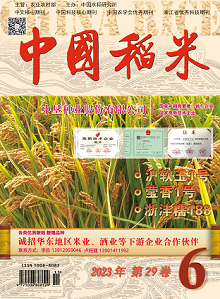This article reviewed the research progress in the field of rice cultivation in China in 2020 to 2022. It covers several hot research areas, including unmanned smart cultivation of rice, high-quality and high-yield green cultivation of rice, mechanized cultivation of regenerative rice, diversified and multi-seasonal planting in rice fields, integrated ecological cultivation and breeding in rice paddies, as well as low-carbon emission rice cultivation, and discussed the research difference in China and abroad, provided an outlook on the future development of the discipline in China. In recent 3 years, unmanned aerial seeding technology, unmanned land preparation technology, precision unmanned machine planting technology, precision unmanned fertilization technology, and intelligent remote control irrigation technology have been developed. Several new green and high-yield cultivation modes, such as aerobic rice cultivation technology, rice deep-side fertilization technology, rice dense planting and reduced nitrogen cultivation technology, rice double-cropping and direct-seeding technology, have been proposed, which have eased the contradiction between high yield and high efficiency, high yield and high quality, and land use and soil conservation, and coordinated the relationship between environmental factors and high yield, high quality, and safety. The goal of reducing the use of pesticides and fertilizers, saving water, resisting drought, and producing high-quality and green crops has been achieved. In the field of regenerated rice technology, the mechanical harvesting and ratoon rice high-yield and efficient cultivation technology model and the “four prevention and one increase” high-yield and efficient cultivation technology system for ratoon rice system have been established. Cultivation techniques such as selecting varieties with low stubble for mechanical harvesting and high stubble for manual harvesting, timely early sowing, furrow irrigation, secondary field baking, repeated application of sprouting-promoting fertilizer, and appropriate stubble height have been proposed. A diversified and efficient planting mode has been constructed, forming a new situation of “hierarchical planting, diversified crop matching, and efficient land use.” In the main rice-growing areas, new ecological rice-farming models such as rice-prawn, rice-turtle, rice-eel, and rice-crab have been explored and developed based on local conditions, promoting traditional rice-fish farming to a new stage of “promoting rice farming with fishing, stabilizing grain production and increasing efficiency, ensuring quality and safety, and protecting the ecological environment.” Selecting high-yielding and low-emission rice varieties and developing multiple related cultivation technologies can effectively reduce CH4 emissions from paddy fields.

